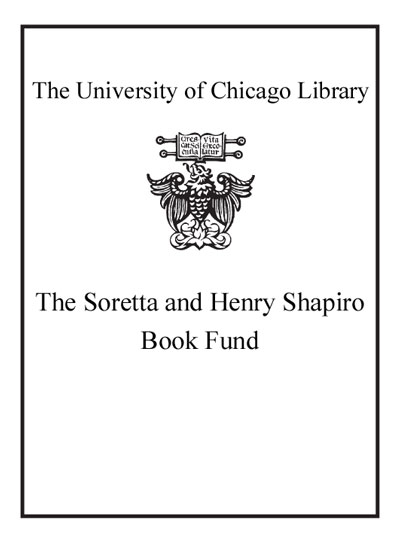From Latin to romance : morphosyntactic typology and change /
Saved in:
| Author / Creator: | Ledgeway, Adam. |
|---|---|
| Imprint: | Oxford ; New York, NY : Oxford University Press, c2012. |
| Description: | xxvii, 434 p. : ill. ; 25 cm. |
| Language: | English |
| Series: | Oxford studies in diachronic and historical linguistics ; 1 Oxford studies in diachronic and historical linguistics ; 1. |
| Subject: | |
| Format: | Print Book |
| URL for this record: | http://pi.lib.uchicago.edu/1001/cat/bib/8846566 |
Table of Contents:
- Series preface
- List of tables
- List of abbreviations
- 1. From Latin to Romance: introduction
- 1.1. From Latin to Romance: the historical background
- 1.2. Research questions
- 1.3. Aims and objectives
- 1.4. Acknowledgements
- 2. Syntheticity and analyticity
- 2.1. Traditional approach
- 2.2. Problems
- 2.2.1. Languages or constructions?
- 2.2.2. Absolute vs relative interpretations
- 2.2.3. Causal relations between analyticity and morphophonological erosion
- 2.2.4. Gradual change and competition
- 2.2.5. Explanatory power
- 2.2.6. Grammaticalization
- 3. Configurationality and the rise of constituent structure
- 3.1. Introduction
- 3.2. Nominal and verbal groups
- 3.2.1. Latin
- 3.2.1.1. Discontinuous structures
- 3.2.1.2. Conclusion
- 3.2.2. Romance
- 3.2.2.1. Adjectival positions
- 3.2.2.1.1. Restricted adjectival positions
- 3.2.2.2. Complements and adjuncts
- 3.3. The sentence
- 3.3.1. Classical Latin
- 3.3.1.1. Discontinuous structures
- 3.3.2. Late Latin and Romance
- 3.4. Conngurationality: concluding remarks
- 3.4.1. Degrees of configurationality
- 4. Conngurationality and the rise of functional structure
- 4.1. Introduction
- 4.2. Determiner phrase (DP)
- 4.2.1. Indefinite article
- 4.2.2. Definite article
- 4.2.2.1. Late Latin
- 4.2.2.2. Romance
- 4.2.2.2.1. Ipse articles
- 4.2.2.2.2. Neuter articles
- 4.2.2.3. Conclusion
- 4.2.3. Other determiners
- 4.2.3.1. Romanian
- 4.2.3.1.1. Demonstrative article
- 4.2.3.1.2. Possessive article
- 4.3. Inflectional phrase (IP)
- 4.3.1. Romance auxiliaries
- 4.3.1.1. Semantic weakening
- 4.3.1.2. Morphosyntactic properties
- 4.3.1.3. Morphophonological specialization
- 4.3.1.4. Romance perfective auxiliary constructions
- 4.3.1.5. Romance synthetic future(-in-the-past)
- 4.3.2. Romance verb positions
- 4.3.2.1. Summary and conclusions
- 4.4. Complementizer phrase (CP)
- 4.4.1. Evidence for Latin CP structure
- 4.4.1.1. Archaic non-configurational pattern
- 4.4.2. Evidence for Romance CP structure
- 4.4.2.1. Topic and Focus Fields
- 4.4.2.1.1. Internal structure of Topic and Focus fields
- 4.4.2.1.1.1. Focus field
- 4.4.2.1.1.2. Topic field
- 4.4.2.2. Force and Finiteness
- 4.4.2.3. Other projections
- 4.5. Conclusion
- 5. From Latin to Romance: a configurational approach
- 5.1. Introduction
- 5.1.1. Early evidence for functional structure
- 5.1.2. Early evidence for configurationality
- 5.2. Head parameter: traditional observations
- 5.2.1. Some Romance counterexamples?
- 5.3. Changing directions: Latin
- 5.3.1. Early head-initial structures
- 5.3.1.1. Complementizers and adpositions
- 5.3.1.2. Comparatives
- 5.3.1.3. Relatives
- 5.3.1.4. Noun phrase
- 5.3.1.4.1. Adjectives
- 5.3.1.4.2. Genitives
- 5.3.1.4.3. Concluding remarks
- 5.3.1.5. Other categories
- 5.3.1.6. Summary
- 5.3.2. Verbal group
- 5.3.2.1. Auxiliary and dependent infinitive
- 5.3.3. Conclusion
- 5.4. Changing directions: from Latin to Romance
- 5.4.1. Head-last → head-first: roll-up
- 5.4.2. Rise of head-initiality
- 5.4.2.1. Position of complement clauses
- 5.4.2.2. Position of nominal complements
- 5.4.2.3. Other patterns of harmonization
- 5.4.2.4. Clausal word order
- 5.4.3. Pragmatic variation: left-edge fronting
- 5.4.3.1. Identifying the left-edge: cola and left peripheries
- 5.4.3.2. Modifier fronting
- 5.4.3.2.1. Reanalysis: roll-up → edge-fronting
- 5.4.3.3. Nominal fronting
- 5.4.3.4. From Latin to Romance
- 5.5. Conclusion
- 6. Head-marking and dependent-marking
- 6.1. Introduction
- 6.2. Variation in marking
- 6.3. Romance functional categories → Romance head-marking
- 6.3.1. Head-marking on D
- 6.3.2. Head-marking on Infl
- 6.3.3. Head-marking on C
- 6.3.4. Extreme head-marking: the case of Ripano
- 6.3.4.1. Verbal domain
- 6.3.4.1.1. Subject-verb agreement
- 6.3.4.1.2. Subject-/object-verb agreement
- 6.3.4.1.3. Object-verb agreement
- 6.3.4.2. Contagious head-marking
- 6.4. Conclusion
- 7. The rise and fall of alignments
- 7.1. Introduction
- 7.2. Classical Latin
- 7.3. Late Latin and conservative Romance: active/stative syntax
- 7.3.1. . Verbal group
- 7.3.1.1. Perfective auxiliary constructions
- 7.3.1.1.1. Latin background
- 7.3.1.1.2. Romance
- 7.3.1.2. Participle agreement
- 7.3.2. Nominal group
- 7.3.2.1. Extended and generalized accusative
- 7.3.2.2. Early Romance binary case systems
- 7.3.3. Sentence: word order
- 7.3.4. Other patterns
- 7.4. Innovative Romance: nominative/accusative syntax
- 7.4.1. Verbal group
- 7.4.1.1. Perfective auxiliary constructions
- 7.4.1.2. Participle agreement
- 7.4.2. Sentence: word order
- 7.5. Concluding remarks
- References
- Index

